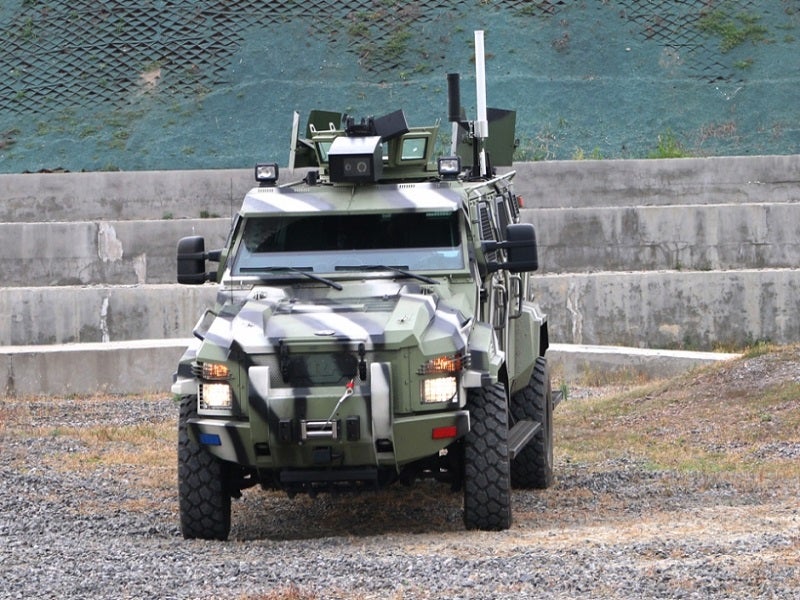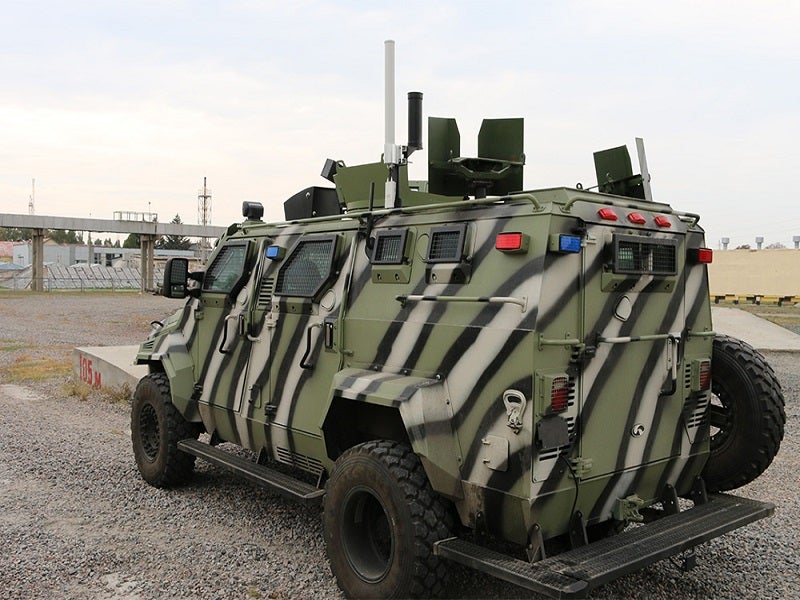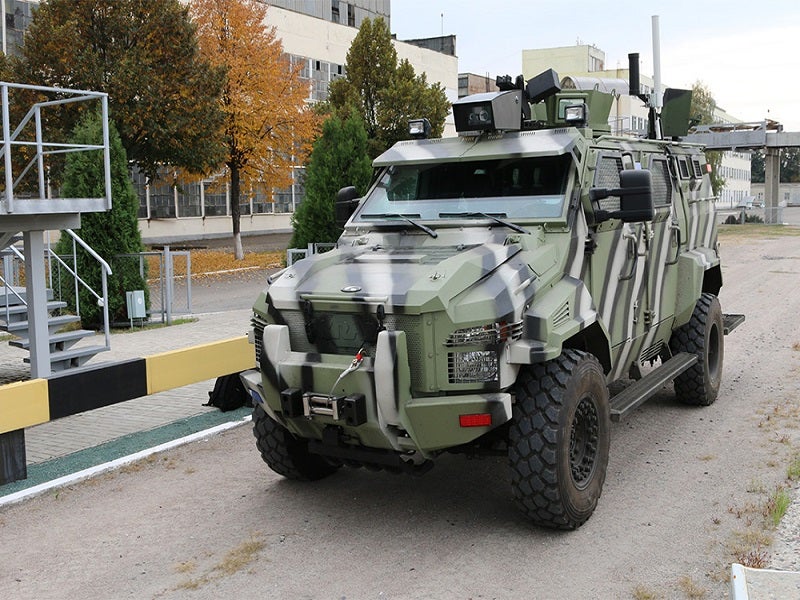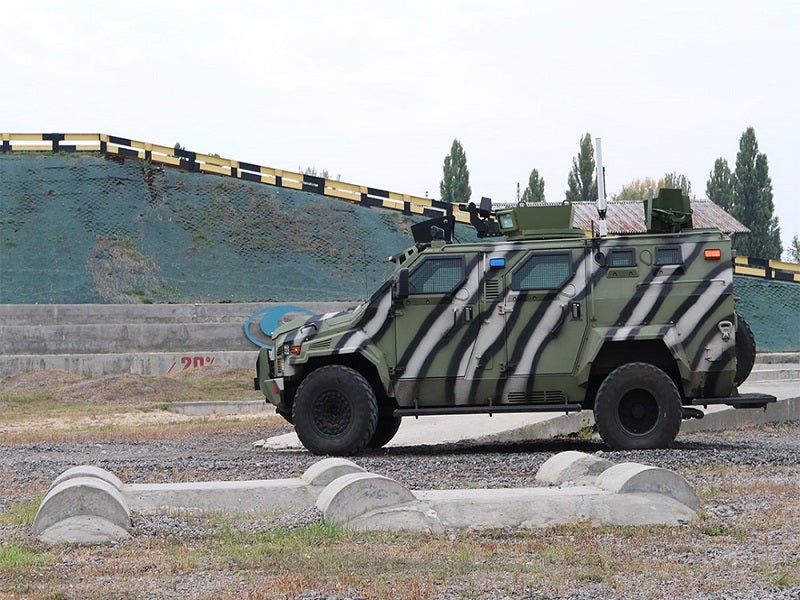KrAZ-Spartan is a 4х4 self-driving armoured vehicle deployed by the Ukrainian National Guard. It is based on the KrAZ Spartan light armoured vehicle, which itself is a licensed variant of STREIT Group’s Spartan armoured personnel carrier.
The KrAZ-Spartan autonomous vehicle was developed by Public Joint-Stock Company ‘AutoKrAZ’ in partnership with Infocom. AutoKrAZ unveiled the vehicle during the Arms and Security 2016 exhibition held in October.
It was showcased to the Armed Forces of Ukraine, along with the company’s other armoured vehicles such as KrAZ-6322, KrAZ-Shrek, KrAZ-Fiona, and KrAZ-Hulk, at the AutoKrAZ test site, in December 2019.
The KrAZ-Spartan UGV was also displayed at the XI International Scientific and Technical Conference in Lviv, in May 2018.
The self-driving vehicle was built to replace conventional manned armoured vehicles for operations in high-threat zones. It can transport ammunition, food, fuel and medicines to the combat zone and can also carry wounded troops to hospitals.
The self-driving platform avoids risk to human life in case of any attack during these operations, which involve high risk to the lives of vehicle operators.
KrAZ-Spartan design and features
The KrAZ Spartan self-driving vehicle is based on Ford F-550 pick-up truck chassis, which offers higher payload capacity and good cross-country mobility. The vehicle can also be configured for manned operations as it features a crew cab for housing two occupants.
The troop / cargo compartment at the rear allows the carriage of equipment or personnel. It is designed to reduce risks and save lives of troops performing tactical tasks in high-threat combat environments.
The self-driving vehicle measures 6m-long, 2.44m-wide and 2.4m-high, and has a gross weight of 8,800kg. The standard equipment and systems aboard the vehicle include a winch, lighting system, air conditioning / heating system and a spare tyre.
Sensors onboard KrAZ-Spartan
The indigenously developed Pilotdrive system, on the KrAZ-Spartan, integrates a range of special sensors for detecting the surrounding area.
The sensors suite includes an infrared camera with automatic target designation and acquisition capability, a 360° field of view video camera, front and rear radars for obstacle detection, distance measuring device, capacitive sensor with detection range of 18m, and signalling system.
The Pilotdrive system enables the vehicle to measure the width of the road and detect obstacles on the route. The analysis and decision system delivers a quick response and alerts the vehicle to immediately avoid obstacles.
Command and control
The KrAZ-Spartan autonomous vehicle is operated by a tablet, a smart glove or an operator control station. The real-time information is transferred between control station and vehicle, through Wi-Fi / Wimax wireless networks with a range from 10km to 50km.
The vehicle also integrates a hardware and software suite offering SmartDrive, Teach-inDrive and return-Home driving modes. In SmartDrive mode, the vehicle follows a pre-determined path assigned by the operator, while the Teach-inDrive mode allows the vehicle to store the details of assigned route. The path co-ordinates are transferred from GPS satellites.
The preliminary control functions including stop, autopilot and return home allow the operator to choose an appropriate mode in the event of loss of communication with the unmanned vehicle.
Armament and self-protection
The Spartan self-driving vehicle can be armed with a remotely-controlled weapon station mounting a 12.7mm machine gun or a 40mm automatic grenade launcher. It offers CEN Level BR6 protection.
The vehicle’s hull is designed to resist multiple 7.62mm assault rifle rounds from any angle, while the bottom of the vehicle can withstand the blast of two DM51 high-explosive fragmentation hand grenades.
Engine and performance
The autonomous vehicle is powered by a Ford 6.7l V8 turbocharged diesel engine mated to six-speed automatic transmission, which develops a power output of 300hp.
Fitted with run flat tyres, KrAZ-Spartan has a maximum speed of 110km/h and can attain a maximum range of 800km. It has the ability to cross a vertical step of 0.5m and can ford a maximum depth of 1.2m. The gradient and side slopes of the vehicle are 60% and 35% respectively.







